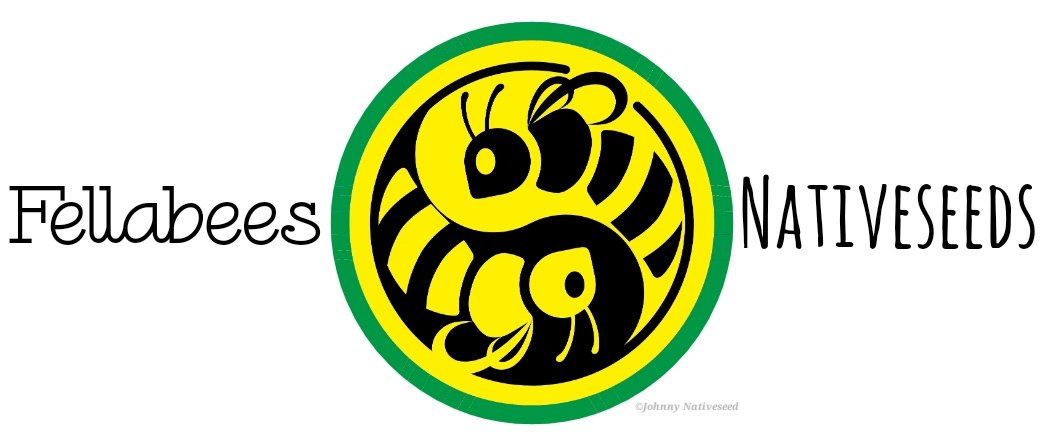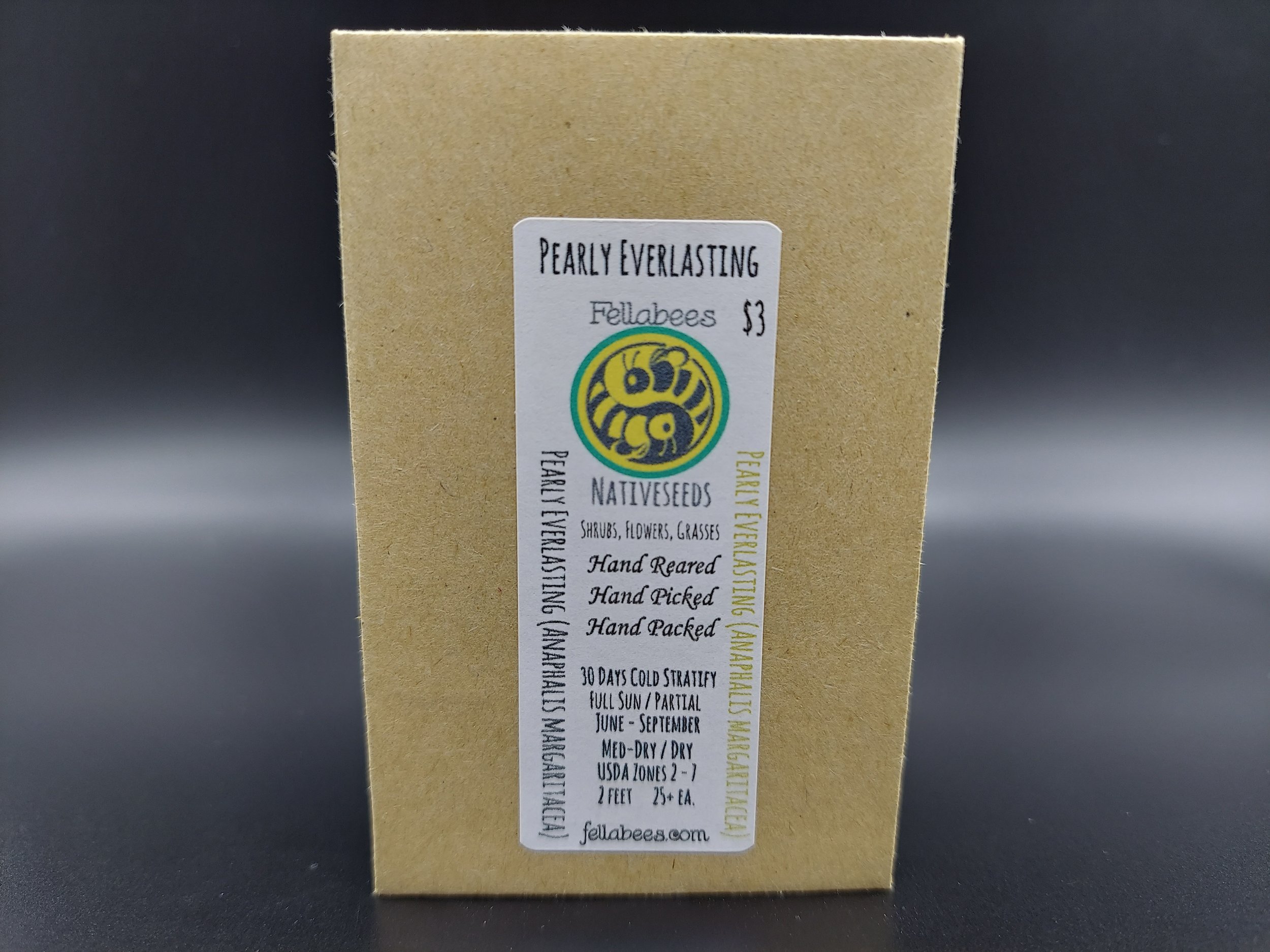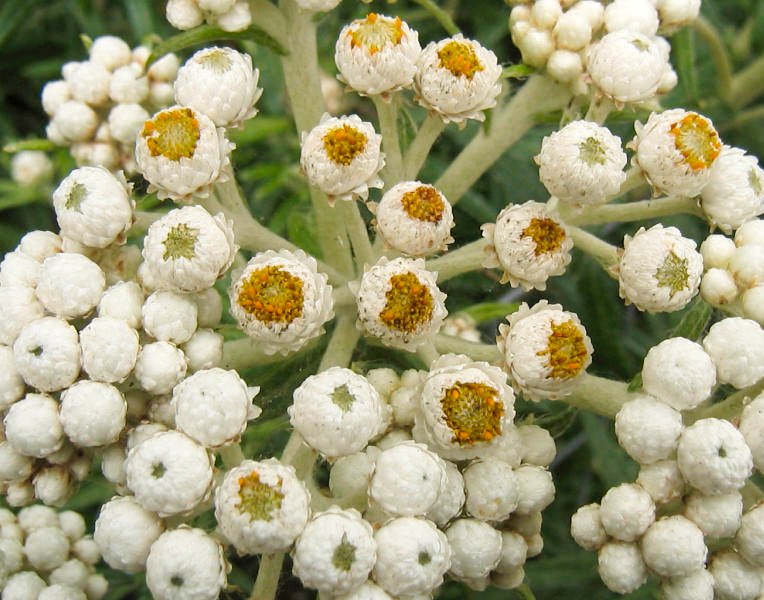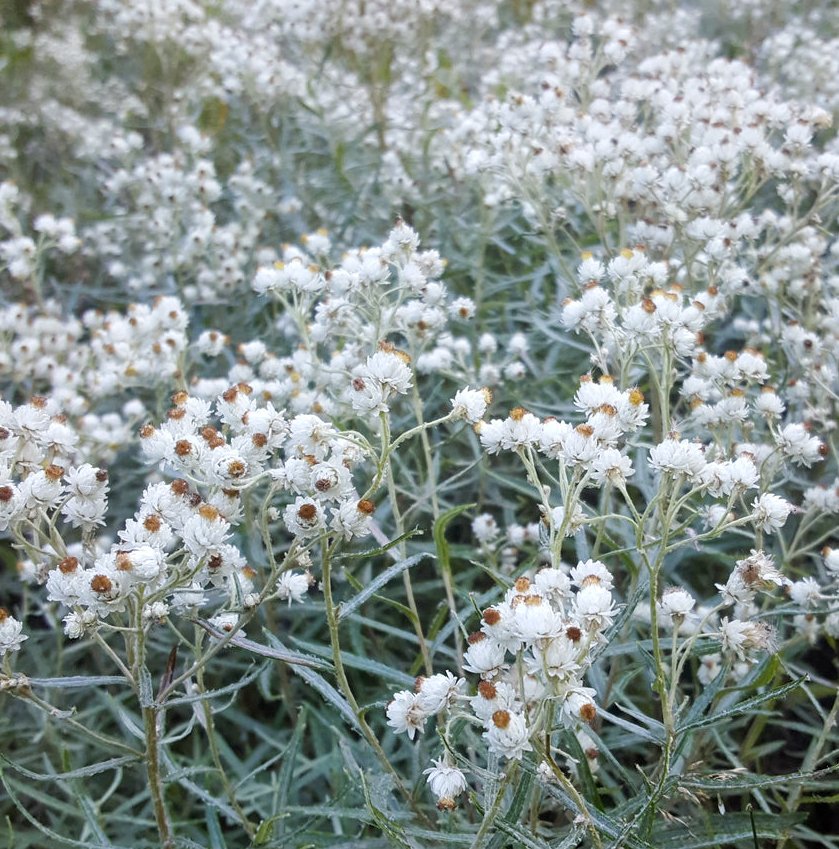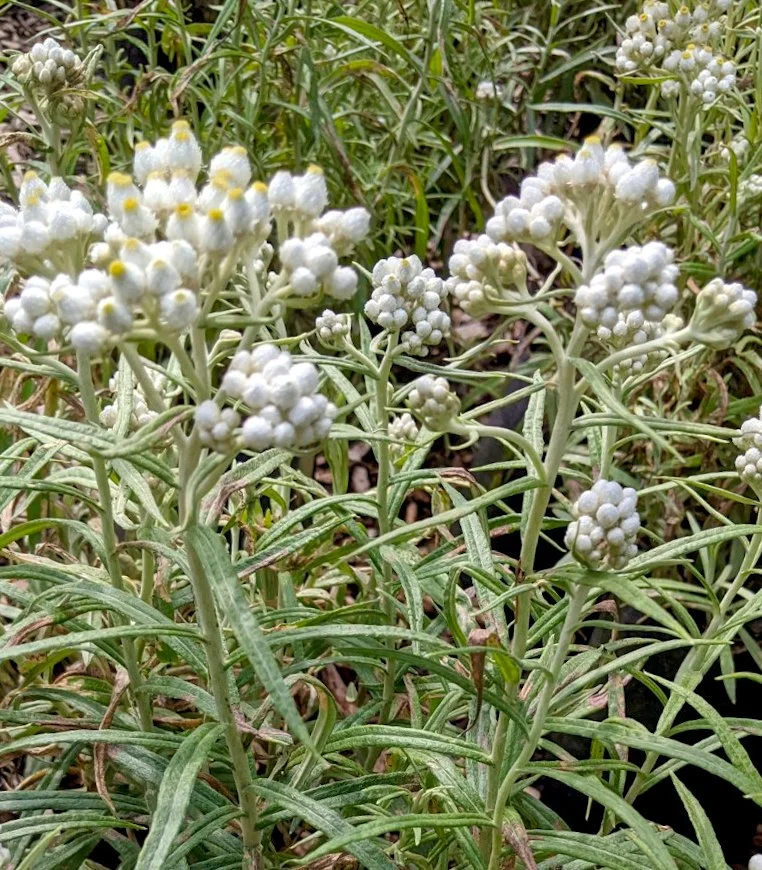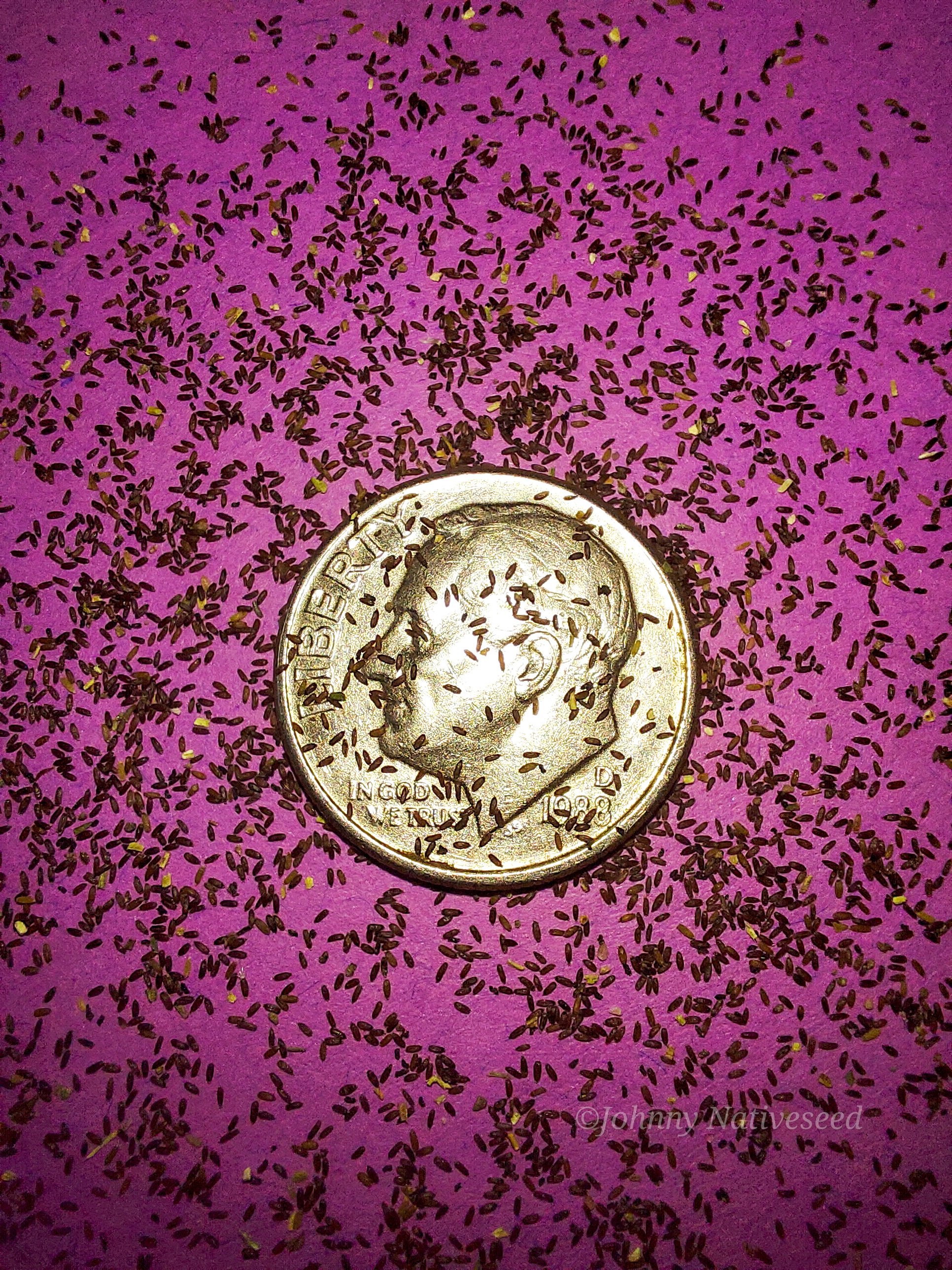Pearly Everlasting (Anaphalis margaritacea)
Pearly Everlasting (Anaphalis margaritacea)
Anaphalis margaritacea, is the taxanomic or scientific name for what is more commonly known as the Pearly Everlasting, in most of its range, or Western Pearly Everlasting in regions west of the Mississippi River.
Pearly Everlasting is a native North American species of flowering perennial in the epicly vast Asteraceae family.
Pearly Everlasting grows erect up to about 3 feet tall, with narrow, alternate leaves up to 5 inches in length. The undersides of the leaves are densely covered in tiny hairs, and its stems feel dry and brittle. It’s whitish, fading to yellowish flower grows to about one 1⁄4 inch across as part of a corymb inflorescence, the most conspicuous part of which is the numerous pearly white bracts that surround the disc florets.
Blooming from June through September it is helpful to know that Pearly Everlasting is dioecious, which means that pollen-producing (male) or a seed-producing (female) flowers are borne on separate plants.
Pearly Everlasting is not just native to North America, it is widespread across most of Canada and the United States, as well as northwestern Mexico. Asian populations can be found in China, the Russian Far East, Japan, Korea, Northern Indochina, and into the Himalayas. This species is reportedly introduced and naturalized in Europe though not native there. As the above regions may indicate, Pearly Everlasting prefers dry, sunny climates, but is hardy to temperatures well below freezing.
The leaves are host to the caterpillars of the American Painted Lady Butterfly (Vanessa virginiensis) as well as its similarity named cousin the Painted Lady Butterfly (Vanessa cardui).
Pearly everlasting is often grown by gardeners for its attractive foliage, it’s deer resistance, its artraction to pollinators, and modestly beautiful white blooms. Prefering well drained soil, somewhat sandy and dry and with less organic matter with at least partly sunny conditions, if not full sun, are required for Pearly Everlasting to grow successfully. Where there is no stress from native competition can become somewhat aggressive spreaders in optimal conditions, but will still yield to other native plants who mature in their presence.
The flowering stems of Pearly Everlasting can be dried and the fluffy flower heads are beautiful ehen used in dried flower arrangements, and the leaves of young plants are edible when cooked.
This plant is considered present but rare in several counties of the states of Iowa, Illinois, Indiana, West Virginia, Virginia, Maryland, North Dakota, Nebraska, and Texas. It is also listed as extirpated (locally extinct) in areas of Delaware.
Plant Details
USDA Zones: 2-7
Germination Needs: 30 Days Cold Stratification
Life Cycle: Perennial
Sun Exposure: Full to Partial
Soil Moisture: Medium-Dry, Dry
Plant Spacing: 1-3 feet
Height: 2 feet
Bloom time: June, July, August, September
Bloom Color: White
Advantages :
Pollinator Favorite: butterflies, moths, bees, wasps, beetles
Bird Favorite: seeds, insects, fruit, nectar, nesting, perchs.
Deer Resistant: Yes
Native to : Wisconsin, Minnesota, Iowa, Illinois, Michigan, Indiana, Ohio, Pennsylvania, New York, Vermont, New Hampshire, Maine, Massachusetts, Rhode Island, Connecticut, Delaware, Maryland, New Jersey, West Virginia, Virginia, Kentucky, North Carolina, Tennessee, Arkansas, Missouri, North Dakota, South Dakota, Nebraska, Texas, New Mexico, Arizona, Colorado, Utah, Wyoming, Idaho, Nevada, California, Oregon, and Washington.
.
.
Packet quantities:
We pride ourselves on ethical, hands on, ecological management, using no mechanical or chemical methods whatsoever.
All of our native seed is hand reared, hand picked, and hand packed from native prairies under our exclusive management, never breaking chain of custody from the field until it is sent to you. Each packet is hand prepared for shipment by us, directly.
Small seed species will contain greater than 20-25 seed
Large seed species will contain greater than 10-15 seed
It is our mission to spread the wealth of native plant and pollinator ecological sustainability, and educate back yard gardeners as well as corporate and government entities in how to germinate, grow, and benefit from native synergies.
Thank you for your support, it is because of you, that we can grow together to do, what we do.🐛🦋🐝🐞🌾🌱🌼🧡
